St. Basil's Cathedral, Russia
St. Basil’s Cathedral is probably Russia’s most iconic and famous building. Actually, its official name is the Cathedral of the Intercession of the Most Holy Theotokos on the Moat, and it was built between 1555 and 1561 by the order of Tsar Ivan The Terrible.
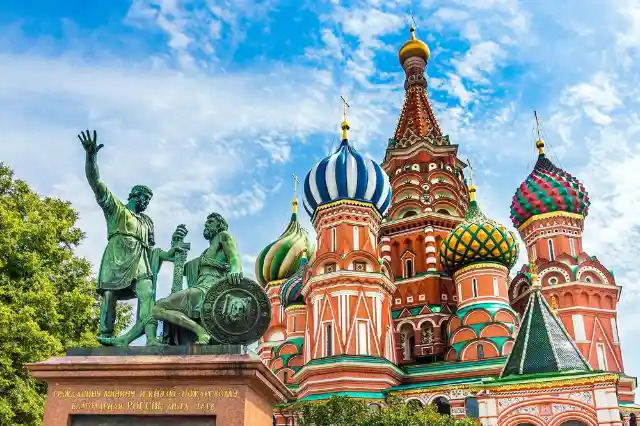
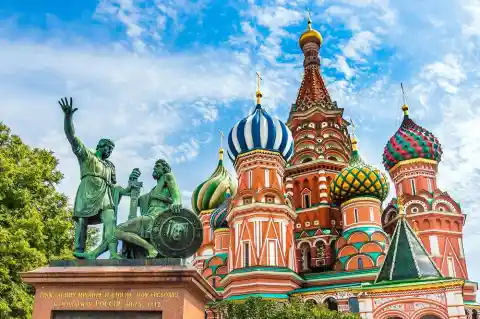
Did you know that it is not one single church, but actually nine churches in one? Initially, the basement of the cathedral served as a basis for nine tiny churches that were built one after the other. All of them were connected with galleries and passageways. The cathedral’s exterior was meant to look like brickwork, which explains its unique and lively colors.
Kamppi Chapel, Finland
Kamppi Chapel is located in Helsinki, the capital of Finland. This Chapel offers a perfect opportunity to calm down in the middle of one of the busiest areas in Finland. The building was built in 2012 and was designed by architects Mikko Summanen, Niko Sirola, and Kimmo Lintula. Thanks to its sound-proof ceiling and window-free facade, it has earned the nickname of “Chapel of Silence.”


Because of its weird-looking round structure, tourists don’t usually recognize it or think it is a chapel. In fact, no holy events like baptisms or wedding ceremonies are held here. However, sometimes there are prayer meetings. The chapel became popular immediately after it was opened. Nowadays, the building is considered an architectural landmark which both fascinates and inspires.
Hallgrímskirkja, Iceland
Hallgrímskirkja is located in Reykjavík, the capital of Iceland. It was designed in 1937 and completed in 1986. The design of the sanctuary took inspiration from the form lava takes when it cools. This Lutheran parish church is actually the tallest church in Iceland. Inside the church, there is an impressive pipe organ which was built by the famous organ builder Johannes Klais of Bonn.


The pipe organ is the largest musical instrument in Iceland. It consists of 5,275 pipes and weighs 50,000 pounds. Standing directly in front of the church, there is a statue of Leifur Eiríksson, the first European to discover America. Can you picture yourself standing right in front of the church? The building is so high that it looks kind of intimidating, right?
La Sagrada Familia, Spain
The Sagrada Familia is, perhaps, the most famous landmark in Barcelona. This Roman Catholic church was designed by the famous Catalan architect Antoni Gaudí. It attracts over 3 million visitors each year and is one of the world’s most iconic churches.
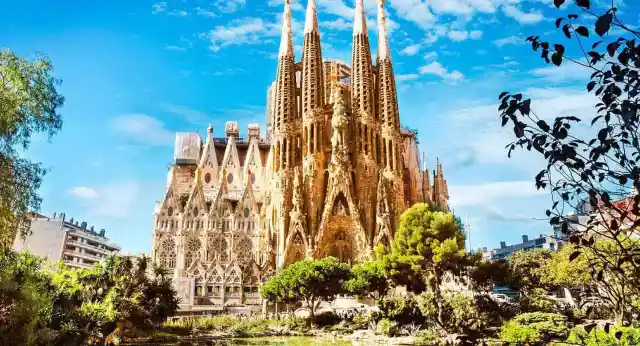
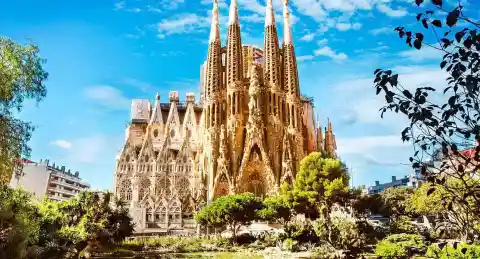
However, the building still hasn’t been completed. Believe it or not, its construction began in March 1882… which means it’s been in construction for 137 years! However, they say that the project will be finished in 2026. We don’t know if to believe it or not!
St. Alexander Nevsky Cathedral, Bulgaria
This neo-Byzantine cathedral is one of the most symbolic buildings of Bulgaria. The St. Alexander Nevsky Cathedral, located at the heart of Bulgaria’s capital city of Sofia, is composed of marble from Munich and mosaics from Venice. It’s definitely a must-visit landmark!
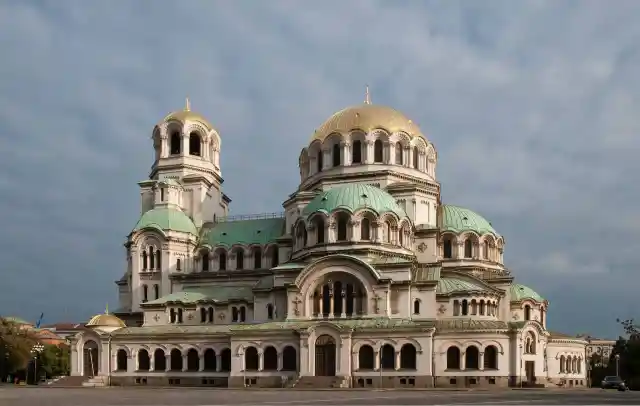

The cathedral’s construction began in 1882 but was not completed until 1912. Its name comes from the Russian prince Saint Alexander Nevsky who lived in the 13th century and whose relics are found in a case on the left side of the altar. This amazing cathedral was built to honor those who sacrificed their lives during the Russo-Turkish War of 1877-1878.
Cologne Cathedral, Germany
The construction of this Gothic masterpiece started in 1248 but was not completed until 1880. The Cologne Cathedral’s exceptional intrinsic value and the artistic masterpieces it contains make it a unique tourist attraction that you cannot miss! The building is so tall that it can be seen from nearly every point in the city center.

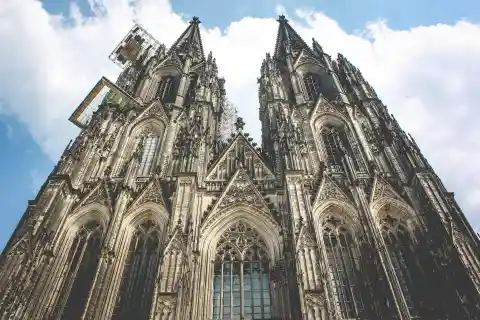
The laws and regulations of Germany and the State of North Rhine-Westphalia guarantee the consistent protection of the Cologne Cathedral and its surroundings. In turn, the Cathedral Workshop is responsible for the maintenance, conservation, and restoration of this church. What’s more, it is the largest Gothic church in northern Europe.
Mosque-Cathedral Of Cordoba, Spain
The Moorish mosque, known for its characteristic red-and-white-striped arches, is located in the Spanish region of Andalusia. It is made up of two distinct areas: the courtyard and the prayer hall. It’s also famous for its endless amount of columns of jasper, onyx, marble, and granite. Believe it or not, there are nearly 1,000 of them!

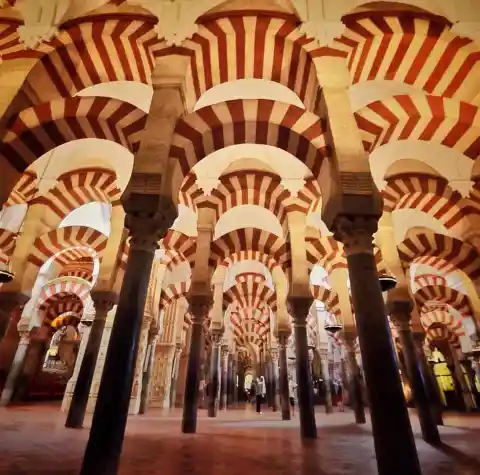
But why is it referred to as “Mosque-Cathedral”? Well, this building was originally a church, and it began being built in 572 AD. But when Muslims conquered Spain in 711, the Church was divided into two halves: a Muslim one and a Christian one. However, this didn’t last long since, in 1784, the Christian half was purchased by Emir Abd al-Rahman I. He ordered to demolish the original structure and built the Grand Mosque of Cordoba, as we know it today.
Cathedral Of Santa Maria Del Fiore, Italy
Santa Maria del Fiore is the third-largest church in the world. This cathedral was dedicated to Santa Maria del Fiore (the Virgin of the Flower), which is a clear allusion to the lily, the symbol of the city of Florence. This enormous structure overlooks the entire city, so no matter the corner in which you’re standing, you’ll always see its magnificent Renaissance dome overlooking the rest of the buildings.
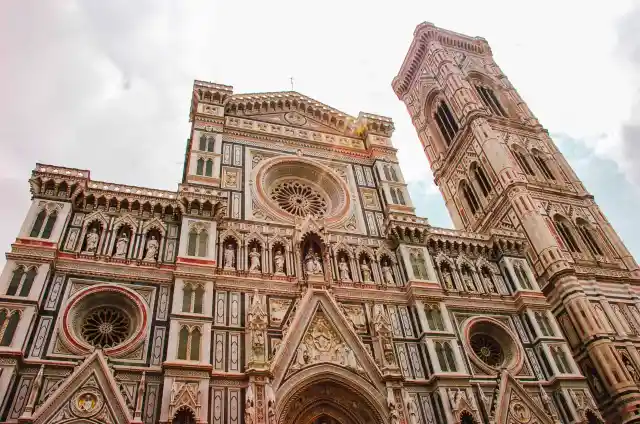
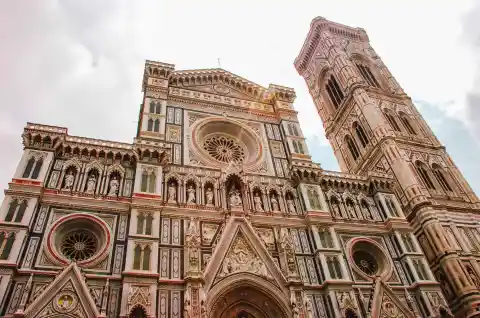
One of the most remarkable features of the building is its enormous and ornamented door known as the “_Porta Della Mandorla_. “ The church is also famous for its splendid stained glass windows, which were made between 1434 and 1455 by artists like Donatello. From the bell tower with the huge dome, you can get one of the most striking views of the town!
Duomo Di Milano, Italy
Say hello to the largest and most complex Gothic-style structure in Italy. Believe it or not, Milan’s magnificent Duomo took nearly five centuries to be completed. This church is so old that it has gone through countless reconstructions, but in spite of that, it remains in a perfect state!
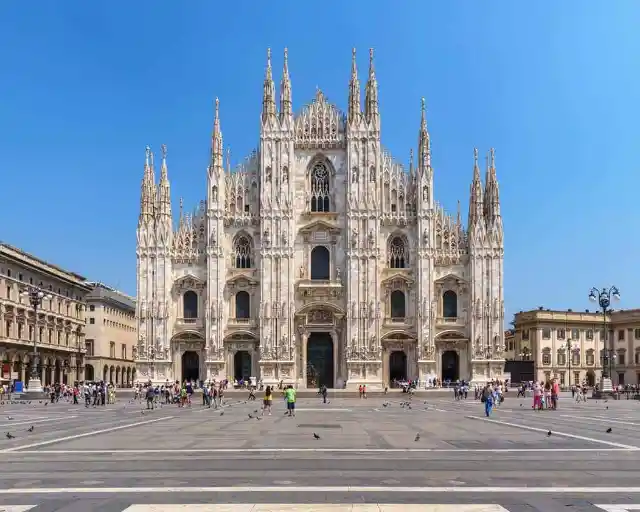

Milan’s Duomo is situated in Piazza del Duomo, one of the city’s oldest and most beautiful squares. But do you wanna know another amazing fact about this centuries-old church? It is believed that there are more statues in this cathedral than in any other building in the world! This gothic-style Church boasts 3,400 statues and 135 gargoyles. Beat that!
Heddal Stave Church, Norway
This fairy-tale church is the largest and one of the most beautiful of Norway’s 28 remaining stave churches. You’re probably wondering what a stave church is. Well, the most characteristic feature of this type of medieval church is that they’re made almost entirely out of wood. Impressive, right?


This masterwork was built in the 1200s and is still in use. It was designed using Viking shipbuilding techniques and decorated with a mix of pagan carvings. Next to the church lies a vicarage barn which holds a couple of exhibitions. And curiously enough, on the first floor of the church, there is a café. And as if this weren’t enough, the building is surrounded by the snow-capped Norwegian fjords!
Mont-Saint-Michel, France
Mont-Saint-Michel is an ancient island located in Normandy, France, but it’s also the name of the island’s most famous church. Without a doubt, this church is one of France’s most visited architectural wonders. It covers an area of 250 square acres, and it is over 90 meters high, overlooking the entire area.
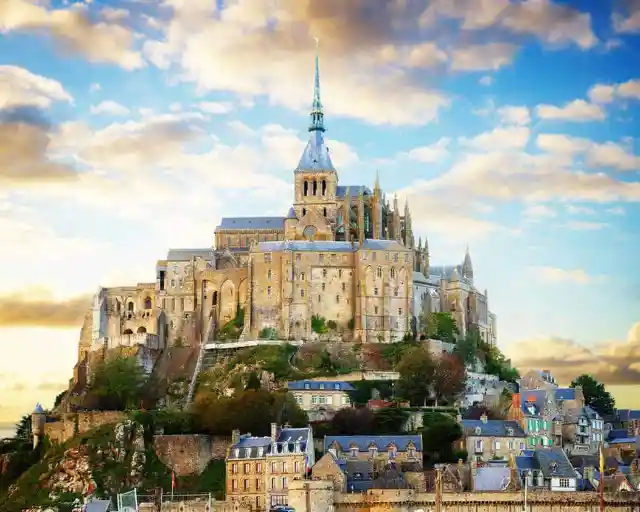
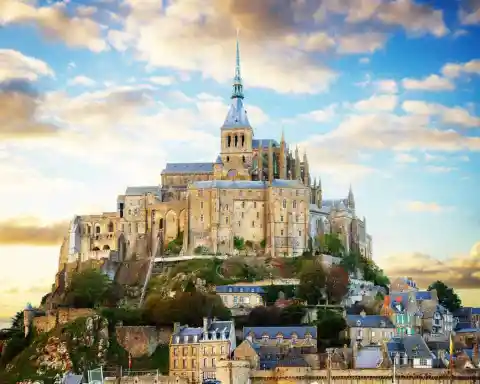
The building’s structure reflects the feudal society that built it. On the very top, God, you have the monastery; below, there are great halls; then, there are several stores and houses; and at the very bottom, you’ll find the outside walls and the houses for fishermen and farmers. What’s more, this gigantic church is surrounded by medieval walls and towers. You can easily spend a whole day touring around the church’s premises!
Notre-Dame De La Garde, France
Notre-Dame de la Garde (Our Lady of the Guard) is a basilica located in Marseille, France. Not only is it one of France’s most popular landmarks, but it’s also home to a popular annual pilgrimage held every August 15\. Are there any history lovers out there? Well, we’ve got some good news! Inside the church, there is a small museum that tells the story of its history.
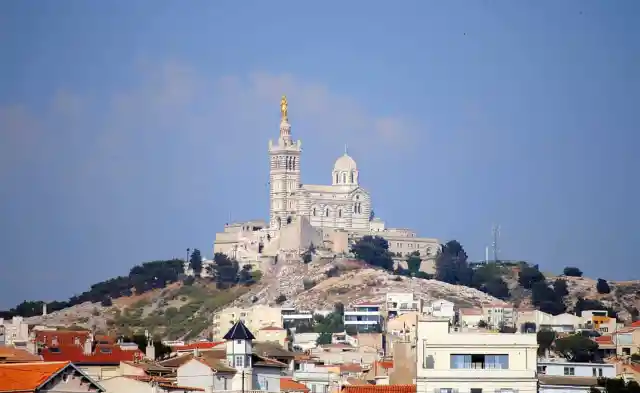

The Basilica of Notre-Dame de la Garde is a wonderful example of Neo-Byzantine architecture and possibly the most iconic building in Marseille. Visitors come here not only to visit the building itself but also because of the breathtaking panoramic views from its terrace. Not only can you see most of the city, but also the sea and some of the nearest islands!
Sainte-Chapelle, France
Many of the churches included in this list took several centuries to be built. But on the very contrary, this Gothic-style gem was built in seven years. It was designed to house one of Christianity’s most venerated relics, Christ’s Crown of Thorns, acquired by Saint Louis and now displayed at Notre-Dame.

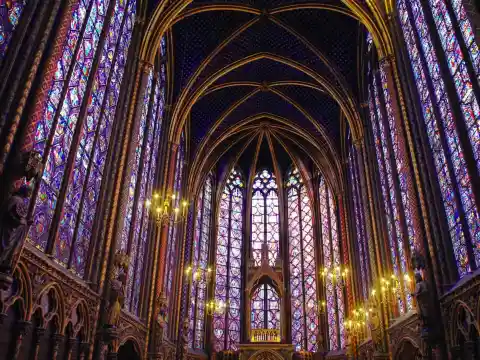
The stunning stained glass panes of this church exhibit scenes from the Old and New Testaments, recounting the history of the world. Also, two-thirds of the stained-glass windows are authentic. In fact, this chapel shows one of the most complete and remarkable sets of stained glass of the modern era.
Cathedral Of Santiago De Compostela, Spain
The Cathedral of Santiago de Compostela is one of the most important religious structures in Spain, particularly because many pilgrimage routes culminate here. Located in the region of Galicia, in the northwest of Spain, it is a key attraction visited by tourists and locals alike. One of its most interesting features is that it houses the tomb of Saint James the Apostle, which lies beneath the main altar.

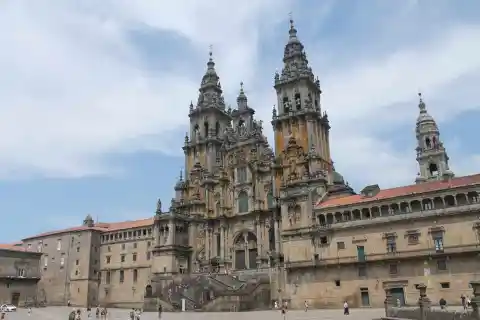
The building exhibits different architectural styles, including Romanesque, Gothic, Baroque, Plateresque and neoclassical architecture, among others. A long set of stairs lead to the “La Gloria portico, “which is the building’s main entrance, which was created by Master Mateo in 1188.
St. Stephen's Cathedral, Austria
Vienna is an ancient city home to dozens of medieval buildings, but this 700-year-old cathedral is probably the most famous and beautiful of them all. It was actually created from limestone, but during these past decades, the city’s pollution has affected it and turned part of the building’s color to black.

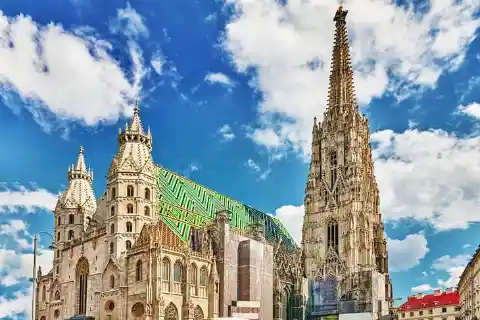
One of its most outstanding features is its multicolored tile roof, which includes a beautiful mosaic of a double-headed eagle. Once you arrive, you must climb the 343 steps up to the tower so as to enjoy a breathtaking view of the entire city. It’s tiring, but you won’t regret it!
Church Of Saint Sava, Serbia
The Church of Saint Sava is located in the Serbian capital of Belgrade. It is the largest Serbian Orthodox church, and it is topped by 49 bells that chime daily at noon. The building is so large that it can be seen from over three kilometers away.


There are lots of myths regarding the church’s mysterious past. It is located on the eastern side of the famous Svetosavski Trg square, and many people believe that this is the exact location where the remains of Saint Sava were burned all the way back in 1595\. Who knows if this is true?
St. Vitus Cathedral, Czech Republic
St. Vitus Cathedral is the largest and the most important temple in Prague. It is located in one of Europe’s most famous castles, the Prague Castle. Apart from its weekly religious services, coronations of Czech kings and queens also took place here.

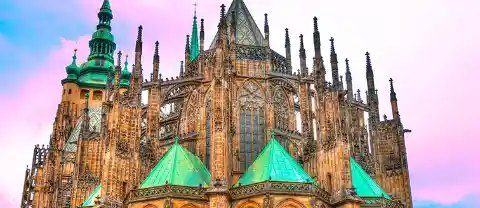
This Gothic-style cathedral was founded in 1344 on the site of the original Romanesque rotunda. The construction took nearly 600 years and was finally completed in 1929. It also features several sarcophagi and tombs of ancient Czech kings. Fascinating! Now, are you ready for our top 3?
St. John's Co-Cathedral, Malta
St. John’s Co-Cathedral is located in the City of Valletta, the capital of Malta. So if you happen to visit this tiny Mediterranean country, you can’t miss this richly ornamented Baroque building. Every corner is highly decorated with 16th and 17th-century art.
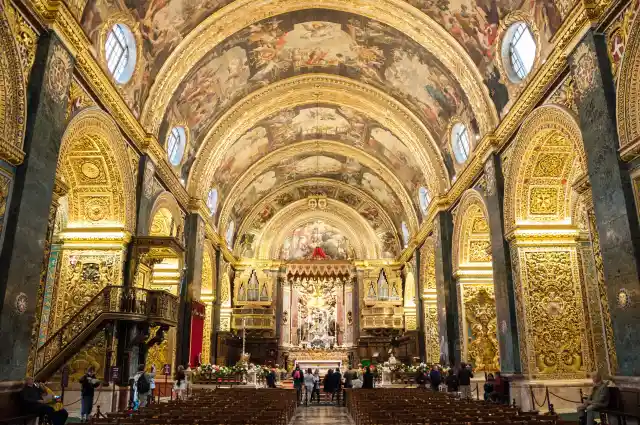
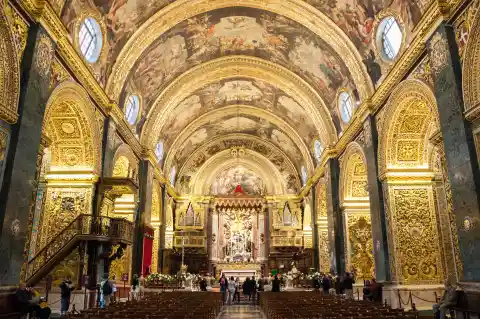
The Knights of Malta built this Baroque beauty in the 16th century. Once there, please admire Caravaggio’s painting, named _The Beheading of St. John the Baptist_. And watch where you step since marble gravestones of the knights of the Order of Malta tile the floor.
Ciuflea Monastery, Moldova
Constructed in the mid-1800s, the monastery of Ciuflea represents one of the finest examples of Russian Byzantine style. It is located in Chisinau, the capital city of Moldova. Over time, the monastery has accumulated many relics of different saints and icons considered to be miraculous.
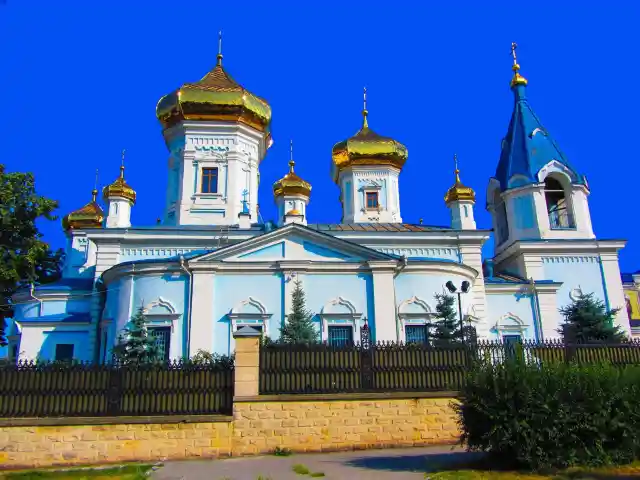
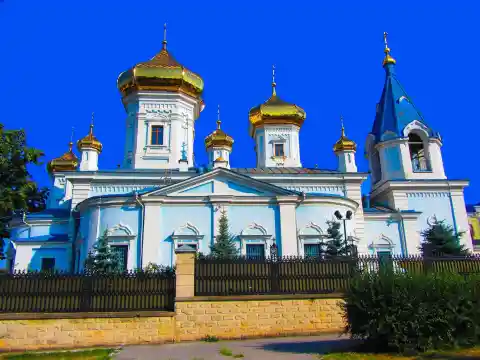
Here’s an interesting historical fact: the monastery was financed by Anastasie Ciufli, a local merchant, to respect the last will of his brother Teodor Ciufli. Teodor’s remains were placed inside the church, and eleven years later, Anastasie passed away and joined his brother, sharing the same resting place.
Westminster Abbey, England
This magnificent and world-famous building is England’s most important church and has been the site of every coronation since that of William The Conqueror in 1066. In fact, it was here that fifty years ago Queen Elizabeth II was crowned.

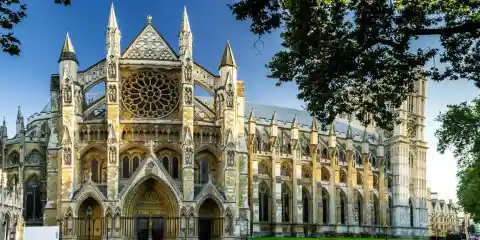
However, the Abbey has not only been the setting for coronations; it has also witnessed numerous other royal occasions such as state weddings and funerals, including the funeral of Diana, Princess of Wales in 1997. So, we’ve gone over two dozens of cathedrals, monasteries, basilicas, and churches, learning some interesting facts. Now it’s time to book a ticket and check out these amazing buildings in real life! What do you think?